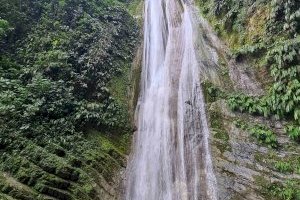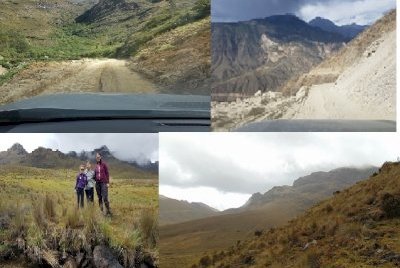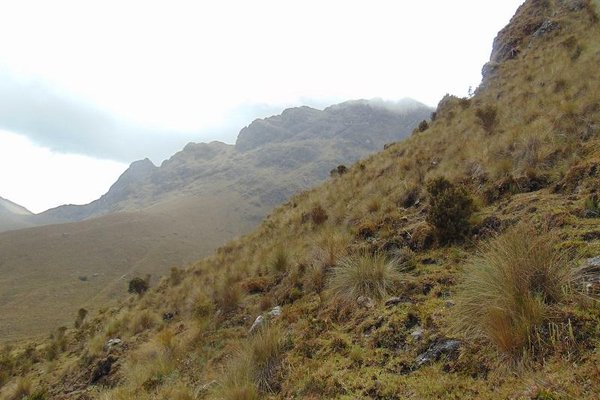Peru
Rio Abiseo National Park
Rio Abiseo National Park is home to a large number of species of flora and fauna, as well as over 30 pre-Columbian archaeological sites.
The park comprises an isolated river basin covered by forests, transitioning into a mountain landscape at higher elevations. The critically endangered Yellow-tailed Woolly Monkey is known to live in the park and relies on it for its survival as a species. The most famous archaeological site in the park is Gran Pajatén, a ruined settlement that was occupied between 900 and 200 BCE, and 200 BCE to 600 CE.
Community Perspective: This is one of the most difficult to visit WHS in South America; Wojciech managed to set foot in the park after a harrowing drive, and also provides practical tips for future visitors. Timonator arrived from the North by boat.
Site Info
Official Information
- Full Name
- Rio Abiseo National Park (ID: 548)
- Country
- Peru
- Status
-
Inscribed 1990
Site history
History of Rio Abiseo National Park
- 1992: Criteria
- To include cultural heritage criteria (iii) as well
- 1990: Referred
- Additional info on Archeological sites
- 1990: Revision
- Derived from 2 former TWHS: Pajaten Archaeological Complex and Rio Abiseo National Park
- 1990: Inscribed
- Inscribed
- Type
- Mixed
- Criteria
- iii
- vii
- ix
- x
Links
- UNESCO
- whc.unesco.org
- Official
-
- juanjui.com — Parque nacional río Abiseo
- Related
-
- patrimoniomundial.cultura.pe — Nomination dossier and IUCN evaluation (not available yet on UNESCO website)
- animalinfo.org — Link
All Links
UNESCO.org
- whc.unesco.org — whc.unesco.org/
Official Website
- juanjui.com — Parque nacional río Abiseo
Related Resources
- patrimoniomundial.cultura.pe — Nomination dossier and IUCN evaluation (not available yet on UNESCO website)
- animalinfo.org — Link
News Article
- June 11, 2025 wmf.org — Discovery of Over 100 Archaeological Structures At Gran Pajatén
- Oct. 14, 2017 perutelegraph.com — Update on visiting Gran Pajaten ancient ruins
Community Information
- Community Category
- Natural landscape: Forest
- Archaeological site: Pre-Columbian
Travel Information
Reservation required
One thousand visitors or fewer
Recent Connections
-
Named after a River
Rio Abiseo -
Reservation required
To enter the park you need a visitor pe… -
One thousand visitors or fewer
"DD : “Despite the evident tourism pote…
Connections of Rio Abiseo National Park
- Geography
-
-
Andes
(500- 4200mtrs) -
Highest cultural WHS
Gran Pajaten 2900 m -
Amazon Basin
"Located in the San Martín Region of Peru between the Marañón and Huallaga rivers" (Wiki) - both tributaries of Amazon
-
- History
-
-
Pre-Inca cultures
Chachapoyas -
Paleo-Indian
"Excavations at Manachaqui Cave, ..., recovered evidence of very early human occupation, Two AMS dates calibrated to approximately 12,200 and 11,900 BP" (wiki)See en.wikipedia.org
-
- Ecology
-
-
Bears
spectacled bear -
Critically endangered fauna species
Peruvian Yellow-tailed Woolly Monkey (1,000-10,000 remaining) -
Endemic monkey species
Yellow-tailed woolly monkey -
Jaguar habitat
-
Rainforests
-
Sloths
brown-throated sloth, two-toed sloth -
Cloud forest
The cloud forest is considered a relic of the preglacial Huallaga Pleistocene refugium, and the reason for the area's high degree of diversity and endemism (UNEP-WCMC) -
Refugium
"The property is believed to belong to the Huallaga Pleistocene refugium according to the Pleistocene refuge hypothesis, a prevailing explanation for biodiversity patterns and endemism. Isolated refuges, such as the area today constituting the property, are thought to have enabled not only the survival but also the birth of new species during glacial periods. Still very incomplete records show impressive endemism in plants, invertebrates, amphibians, evidence for ongoing speciation processes." (UNESCO) -
Anteaters
southern tamandua
-
- Architecture
-
-
Mosaic art
Gran Pajaten: slate mosaics displaying human, bird and geometric motifs
-
- World Heritage Process
-
-
Mixed sites which became so after original inscription
Natural extended to Cultural -
Derived from more than one TWHS
Pajaten Archaeological Complex and Rio Abiseo National Park
-
- Human Activity
-
-
Man-made Terraces
Gran Pajat
-
- Constructions
-
-
Cultural sites connected to Cliffs
-
Tombs
Los Pinchudos
-
- WHS on Other Lists
-
-
World Heritage Forest Programme
-
World Monuments Watch (past)
Los Pinchudos Archaeological Site, Rio Abiseo National Park (2002, 2000) -
Centres of Plant Diversity
SA37 Eastern slopes of Peruvian Andes - "Even though only limited research has been conducted in these forests and grasslands, more than 5,000 plant species have been recorded, almost 1,000 in the grasslands alone." -
World Biosphere Reserves
Gran Pajatén (2016) -
Biodiversity hotspot
Tropical Andes
-
- Timeline
-
-
Built in the 4th century BC
"constitute an outstanding example of pre-Hispanic human occupation at high altitudes in the Andean region from as early as the 4th century BC" (ICOMOS); Gran Pajaten is dated from -900-200 BC and 200 BC-AD 600, but the ruins that can be seen today were constructed in the Inca times (1200-1500 AD)See www.7wonders.org
-
- Science and Technology
-
-
Excavated by American Universities
Gran Pajated is excavated by the Colorado University
-
- Visiting conditions
-
-
Reservation required
To enter the park you need a visitor permit from Peru's Park Service (SERNANP). -
One thousand visitors or fewer
"DD : “Despite the evident tourism potential of the landscape and the fascinating archaeological sites, public visits are highly restricted and controlled due to the property’s fragility. (unesco website). “Cabe mejorar el control de las visitas. El turismo y la recreación en el sector de Churo del Parque, que «(IUCN Outlook)" -
No road access
Best by boat (or hike)
-
- WHS Names
-
-
Named after a River
Rio Abiseo
-
News
- wmf.org 06/11/2025
- Discovery of Over 100 Archaeologic…
- perutelegraph.com 10/14/2017
- Update on visiting Gran Pajaten an…
Community Reviews
Show full reviews
We´ve made it to the Río Abiseo National Park in Peru! Apparently it´s one of the more difficult places to visit in South America but with the knowledge I have gained I thjnk it is quite feasable for everyone now. Nevertheless it cost me an investment of at least 3 days of travelling and planning to make it. And I´ve only visited a tiny corner of a vast national park that has different habitats and geographical regions that are mainly impossible to easily visit and also has a cultural aspect with the Gran Pajatén which I was not able to visit either. If you want to visit the Gran Pajatén you can contact Nestor (see Wojciech´s review) and he might be able to arrange something. I think officially it´s prohibited to visit for tourists but he told me that he could arrange something during May to July when river levels are easy to cross by hiking. In my case I have stayed 2 nights in the Abiseo Lodge just next to the park ranger house and only a 10 minute boat ride from the official NP territory on the complete other side of the park than Gran Pajatén. This lodge is accessible from Juanjui which you can reach from Tarapoto. In my case I took the 21 hour overnight bus from Trujillo (Chan Chan) to Tarapoto (movil bus was really comfy for 30 USD) and then 3 hours by minivan/colectivo to Juanjui. This is the website of the lodge …
Keep reading 1 comment
Site visited in June 2022. Rio Abiseo is undoubtedly the most difficult WHS to visit in Peru and one of the most difficult in South America. Traveling to such places is especially exciting, so I couldn't let it go while planning a trip to Peru with my family.
You can get to Rio Abiseo in two ways: from the east, from Tarapoto (which has connections to Lima), where you can visit the lower part of the park with tropical forest, or from the west, where the gate to the park is Pataz and you visit the high-mountain part of the park, with archaeological sites, including the most famous Gran Pajaten. For logistics reasons, I only considered the western route. Besides, I am not sure if the eastern route covers the core zone or only parts of the Abiseo River outside the national park.
Rio Abiseo National Park is officially closed to visitors, but you can find offers for trips there on the Internet, so I suspected it was not that tragic. Long before we left, I got in touch with Nestor (whatsapp +51961844611), a guide who offered the opportunity to visit Gran Pajaten from Pataz. Due to the huge differences in height (over 1000 meters), he recommended using mules and trekking from Pataz for at least two days when traveling with small children. Later, however, our contact broke off, but I know that Nestor can be a good fixer for those who want to visit Rio Abiseo from …
Keep reading 0 comments